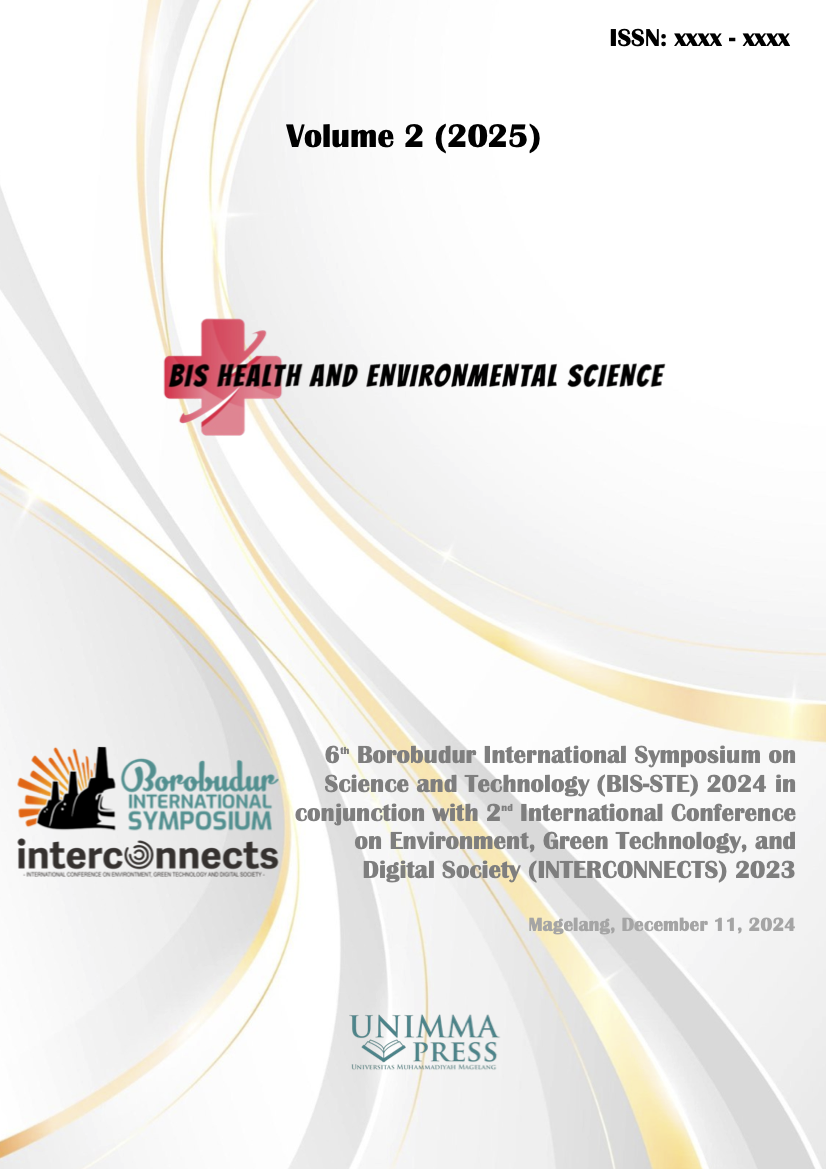Antioxidant activity of red pidada leaf extract (Sonneratia caseolaris Engl.) ABTS method (2,2 azinobis (3-ethylbenzothiazoline)-6-sulfonic acid)
Keywords:
Red pidada leaf, Antioxidant, ABTSAbstract
Red pidada leaf (Sonneratia Caseolaris Engl.) contain chemical compounds including alkaloids, steroids, flavonoids and phenols. Flavonoids are compounds that can protect against UV rays. Antioxidants are compounds that are used to neutralize free radicals by donating electrons to free radical compounds. The extraction process used in this study was the maceration method using ethanol 96%. The qualitative analysis using the phytochemical screening test showed positive presence of phenol, flavonoid and tannin compounds, while the quantitative analysis used the antioxidant activity of red pidada leaf extract (Sonneratia caseolaris Engl.). Measurement of antioxidant activity was carried out using the ABTS method (2,2 azinobis (3-ethylbenzothiazoline)-6-sulfonic acid). The results showed that IC50 of ethanol extract of red pidada leaves (Sonneratia caseolaris Engl.) is 37.67 µg/mL and IC50 acidum ascorbicum is 28.42 µg/mL. So it can be concluded that the antioxidant activity of red pidada leaf extract (Sonneratia caseolaris Engl.) is strong category.
References
[1] G. Sharma, J. Gadhiya, and M. Dhanawat, “Textbook of Cosmetic Formulations,” Food Agric. Organ. United Nations, vol. 1, no. May, pp. 51–52, 2018.
[2] E. S. Syamsul, Supomo, and S. Jubaidah, “Karakterisasi Simplisia dan Uji Aktivitas Antioksidan Ekstrak dan Fraksi Daun Pidada Merah (Sonneratia caseolaris L),” KOVALEN J. Ris. Kim., vol. 6, no. 3, pp. 184–190, 2020.
[3] F. Nurmalasari, T. Ersam, and S. Fatmawati, “Isolasi Senyawa Antioksidan dari Kulit Batang Sonneratia ovata Backer,” J. Sains Dan Seni Its, vol. 5, no. 2, pp. 3–7, 2016.
[4] H. Herwinda and M. Amir, “Aktivitas Ekstrak Dan Fraksi Daun Pidada Merah ( Sonneratia Caseolaris L .) sebagai Antioksidan,” Isbn, vol. 978-602–19, pp. 164–169, 2013.
[5] S. Jubaidah, R. Sundu, and N. Sabriningsih, “Penetapan Kadar Fenolik Total Fraksi Polar dan Nonpolar Daun Rambai Laut (Sonneratia caseolaris L.) dengan Metode Spektrofotometri UV-Vis,” J. Ris. Kefarmasian Indones., vol. 1, no. 2, pp. 140–147, 2019.
[6] D. B. Pambudi, D. Raharjo, N. N. Fajriyah, and M. Sya’bania, “Aktivitas Antioksidan Ekstrak Daun Kersen ( Muntingia Calabura L.) dengan Menggunakan Metode DPPH,” Proceeding 14th Univ. Res. Colloq. 2021 Bid. Kesehat., p. 979, 2021.
[7] E. Hanani, Analisis Fitokimia. Jakarta : EGC: Penerbit Buku Kedokteran EGC, 2016.
[8] A. Malik, “Metodologi Penelitian: Metodologi penelitian Skripsi,” Rake Sar., pp. 33–44, 2017.
[9] A. S. Hasibuan and V. Edrianto, “SOSIALIASI SKRINING FITOKIMIA EKSTRAK ETANOL UMBI BAWANG MERAH (Allium cepa L.),” J. Pengmas Kestra, vol. 1, no. 1, pp. 80–84, 2021.
[10] R. L. Vifta, R. T. Rahayu, and F. P. Luhurningtyas, “Uji Aktivitas Antioksidan Kombinasi Ekstrak Buah Parijoto (Medinilla Speciosa) dan Rimpang Jahe Merah (Zingiber Oficinalle) dengan Metode ABTS (2,2-Azinobis (3-Etilbenzotiazolin)-6-Asam Sulfonat),” Indones. J. Chem. Sci., vol. 8, no. 3, pp. 197–201, 2019.
Downloads
Published
Conference Proceedings Volume
Section
License

This work is licensed under a Creative Commons Attribution-NonCommercial 4.0 International License.

